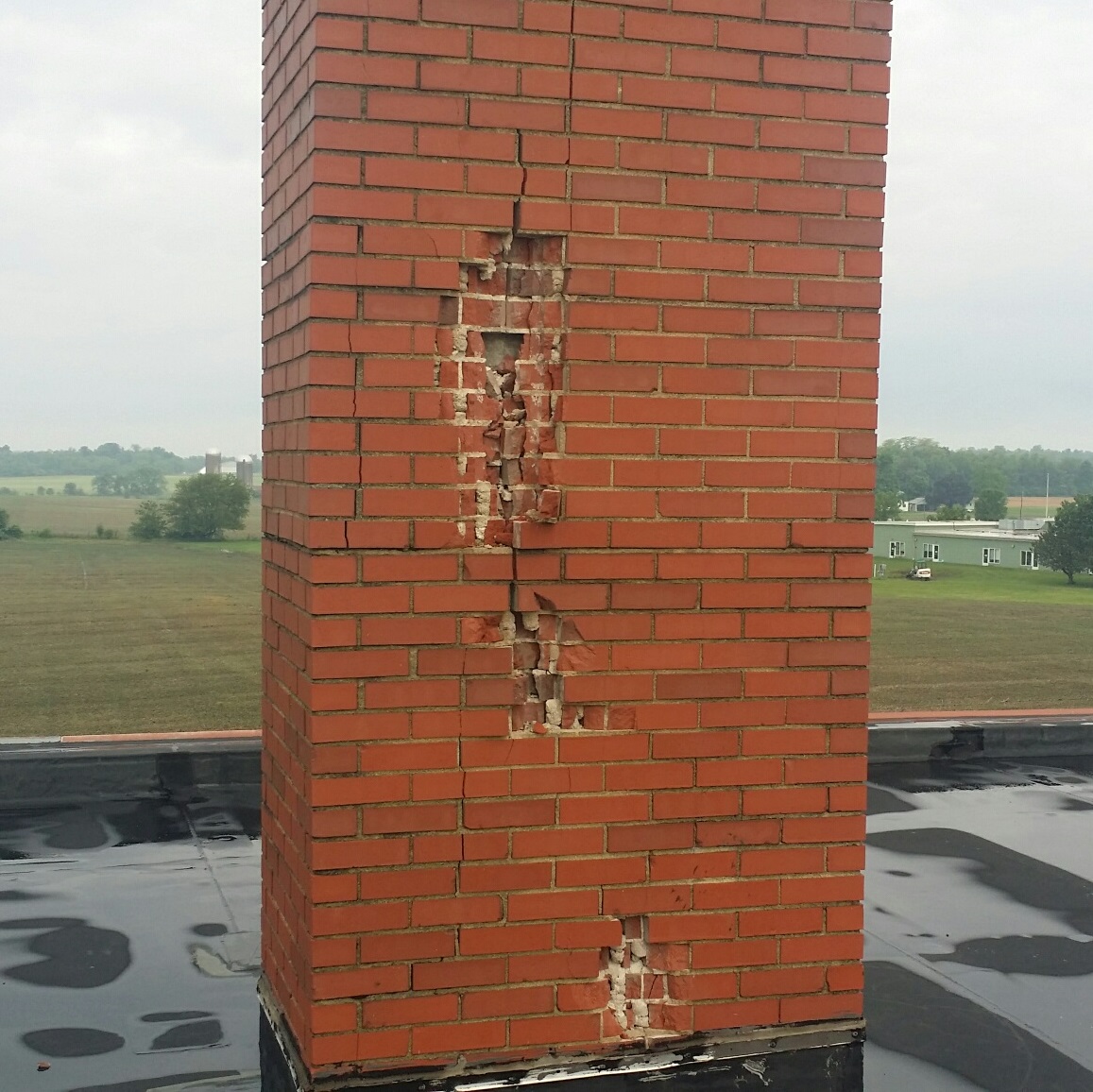Weapons of Summer Roof Destruction
Summer is almost officially here and although you’re probably more worried about how you’ll be spending your summer vacation or keeping up with your staff and workload, we’re here to remind you of potential causes of roof damage. Knowing what can cause it is the first step in preventing bigger problems that could compromise your inventory or equipment you rely on your roof to protect.
Storms
Thunderstorms, tornadoes, you name it. Even if your area is not prone to tornadoes, they can happen. The high winds, rain, and hail can really beat up a roof and leave damage that is either noticeable right away or hidden until you find a leak next time it rains. Stay alert when you know a storm is approaching and do a walk-around check with binoculars to see if you can see any damage from the ground once the storm passes. Pictured here is a chimney that was struck by lightning on a client’s rooftop. Not surprisingly, it caused some leaks.

Pictured here is a chimney that was struck by lightning on a client’s rooftop. Not surprisingly, it caused some leaks.
Hail

This stuff can range in size (see below), anywhere from the size of a pea to a softball. Hail can cause some serious damage. How hard can it hit? Well, a 1 cm hailstone can fall at about 9m/s or 20 mph and an 8 cm stone can fall at about 48m/s or 107 mph!
- Pea = 1/4 inch diameter
- Marble/mothball = 1/2 inch diameter
- Dime/Penny = 3/4 inch diameter
- Nickel = 7/8 inch
- Quarter = 1 inch — hail quarter size or larger is considered severe
- Ping-Pong Ball = 1 1/2 inch
- Golf Ball = 1 3/4 inches
- Tennis Ball = 2 1/2 inches
- Baseball = 2 3/4 inches
- Tea cup = 3 inches
- Grapefruit = 4 inches
- Softball = 4 1/2 inches
Traffic

Foot traffic, that is. Summer is the time of year everyone cranks up the a/c and usually an HVAC contractor is called when it is not working properly or needs inspected. If you’re unit is on your roof, be sure your HVAC professional is not leaving parts or tools lay and are walking in approved areas to ensure your roof system does not become damaged. Unauthorized foot traffic can have expensive consequences if work or activity is not performed with care.
Debris

Did you read our last blog? We have a few GREAT examples of debris left on roofs. Debris can include tree branches, pieces of metal, barrels, chairs, really anything that serves no purpose on the top of your building. What can happen is these items can puncture or tear a hole in your roof, cause a leak next time it rains, and it can cost you unnecessary dollars to repair. We know it can be a pain to remove said debris, but trust us, it’s worth taking the time to remove it.Spend your summer as worry-free as possible. If you think your business’s roof could use some TLC, give us a call to schedule a consultation. Our trained professionals are happy to make sure your business is properly protected this summer. Call 419-739-ROOF or submit a request here.

